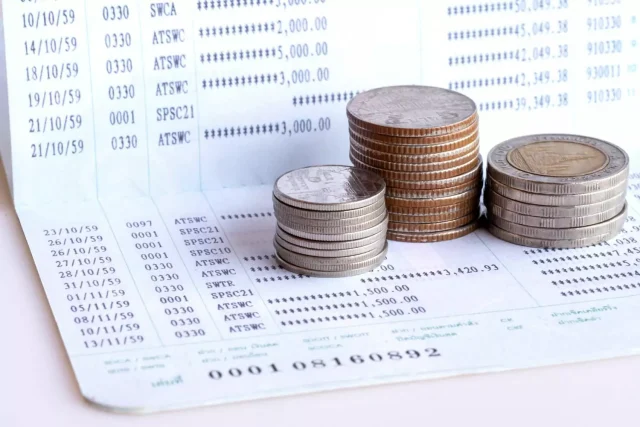Your financial institution creates a document called a bank statement each month. You can view every bit of the account’s income and expenditure history with a bank statement.
You can gain more insight into your spending patterns and improve your financial decisions by comprehending your bank statement. Let’s examine the contents of a bank statement and how they can give you a thorough understanding of your financial situation.
How Do I Read a Bank Statement?
All of the transactions made with your account in a month are listed on your bank statement. The money that has entered and left your account can all be seen in one place by looking at your bank statement. The dates and other parties involved in each transaction are also displayed. You can then see who you paid (or who paid you) as well as the day the transaction actually cleared the bank. With this knowledge, you can manage your savings and make wiser financial decisions.
The following details are typically found on a bank statement:
- Information that makes you personally identifiable, such as your name, address, and bank account number.the time frame that is typically represented by a month in your bank statement.
- Statements, however, don’t always begin at the first of the month. Your statement might, for instance, cover the period from the 13th of one month to the 12th of the following.
- Information about the bank, such as the customer service phone number and guidelines for reporting errors and fraud.
- The balance at the beginning and the end of the reporting period.
- Direct deposits, checks, transfers, reimbursements, payments, on-us items, and interest accrued are all types of deposits that can be made into your account.
- All withdrawals from your account, including buys, transfers, ATM withdrawals, automatic payments, and bank charges.
How Do Bank Statements Operate?
A bank statement is meant to show you precisely what transpired with your account over the course of the previous month, outlining your spending patterns and any incurred expenses.
The way that most bank statements begin gives you an idea of exactly what was deposited into your account during the previous month. You’ll then see a summary of your withdrawal activity. Your summary will show your account balance at the start of the month, followed by your ending account balance following the addition of all deposits and withdrawals.
The details of each transaction you made, including the relevant dates, sums, and payees, are listed below the summary in the bank statement. Depending on how frequently you use your checking account to pay bills, a bank statement for one can be several pages long. The majority of the time, you see your transactions as they happened. You can get a sense of when money enters and leaves your account each month by looking at the detailed list of transactions.
Information about the origin of the deposit and the destination of the expense is also included in your transaction detail. Make sure the transactions are accurate by carefully reviewing them, paying particular attention to the expenses.
Note
You should notify your financial institution as soon as you become aware of any errors on your bank statement. You typically have 60 days to contest any false or fraudulent information.
In some circumstances, your bank statement can also give you the proof you need to apply for a loan.
What period of time should I keep my bank statements?
You might need to obtain your prior year’s bank statements if you’re applying for a loan or getting a divorce, for example. You should have access to your bank statements within that time period, even if your account is closed, as banks are required by law to keep records of them for at least five years. According to the bank, you might have to pay a fee to access statements that are older than a year or two.
Past statements can be downloaded to your computer and kept in an encrypted folder or printed out if you need to save them. In general, you should delete electronic copies of bank statements and shred any paper copies when you no longer need them.
Contrast between paper bank statements and electronic ones. Bank statements that are electronic
The majority of banks let you select how you’d like to get your bank statements. Either an electronic bank statement will be posted to your account or you will receive a paper statement in the mail.
Note
Going paperless and getting your statements electronically might make sense because some banks charge a fee for a paper statement.
It is typically necessary to log into your account and look for a navigation item that says “bank statements” in order to access your electronic bank statements. If a statement option isn’t right away apparent on your navigation, it might be under a heading like “Services” or “Account Information.”. You can select which month to review once you’ve located your statements. Typically, you can print out or save your statement as a PDF on your computer.
Important conclusions
- A summary of all account activity over a specific time period can be found on your bank statement.
- To help you spot possible fraud, a bank statement lists all of your transactions, including deposits and withdrawals.
- You have the option of receiving your bank statements electronically or in hard copies, but receiving them by mail may incur additional costs.
- Even if your account is closed, banks are required to keep accessible records of your bank statements for a minimum of five years.

